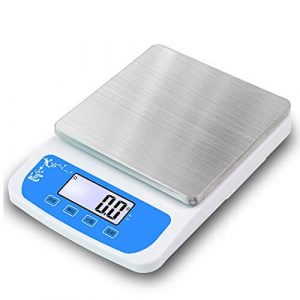How to Calibrate My Digital Scale Without a Weight – Guide by Experts

As we are marching towards living a healthier lifestyle, many people keep a digital scale in their house to keep a check on their weight. Calibrating this digital scale is vital to ensure precise and accurate results. It is suggested to calibrate your scale once in a while if you use it regularly. For the process of Calibration, calibration weights are available in the market. However, these weights are expensive and can also be misplaced easily. So to help you calibrate the scale at home without spending a fortune, I am going to describe an easy step-by-step procedure.
How to Calibrate My Digital Scale Without a Weight?
1. Prepare your scale for the process of Calibration
The first step is to clean your scale and get rid of dust or any particles on its surface. Such factors can also result in unsatisfactory results. To clean the scale, you can use a damp cloth and wipe its upper surface. You can also use ethanol or acetone. Once you clean it, let it dry down completely for 20 minutes approximately.
2. Find the right surface to keep your scale
Now, you should find an even surface to place your digital scale. Make sure that the surface is sturdy so that it doesn’t shake or wobble. You can place your scale on a table or the floor to calibrate it
3. Reset the scale to Zero
Switch on the scale and allow it to show zero on the screen. Place absolutely nothing on the scale until you get the reading. Make sure that the reading doesn’t fluctuate and if it does, place the scale elsewhere. Many digital scales show these fluctuations if not placed on a proper surface and also due to external factors such as pressure, temperature, etc.
4. Check for the Calibration process
Every digital scale comes with its calibration process, which is mentioned in the manual. Read all the instructions properly to understand it thoroughly. Many times there is a button on the digital scale that calibrates it.
5. Select Weights for calibrating the scale
Choose an appropriate weight to calibrate your scale. Although certified weights are recommended for calibrating the scale, you can use a candy bar or any other such item. You should know the exact weight of the item you are going to use for calibrating the scale, though. All household goods come with a Net Weight on their package, which is suitable for the calibration process.
U.S. coins are also a good alternative.You can use pennies, nickels, dimes and quarters as the weight of these coins is already known.
6. Select the weight of your and calibrate the scale
It is advised to start with smaller weights first such as 5 or 10 grams. You can place the weight of your choice on the scale and press the Calibrate button. If you are using a U.S. nickel as a calibration weight, it will show 5 g on the screen. Press enter to save the data on the scale.
7. Keep adding weights until it reaches the maximum weight limit
For carrying out the calibration process rightly it is suggested to calibrate it with its maximum weight capacity. So if you are using nickel coins, stack 8-10 coins on the scale. Stacking ten nickel coins will result in 50 g, which is the maximum limit for many digital scales.Information about the weight limit can be found in its manual or on the manufacturer’s website also. Press the calibrate button after adding weight to calibrate the scale.
8. Check the Calibration
After your scale is calibrated, it is crucial to know if it is appropriately calibrated or not. For checking this switch off your scale and restart it in few minutes. Take any other kitchen item for weighing of which the weight is already known. Weigh this item and notice if it shows the correct weight or is within its error margin as described in the manual.
If you get accurate readings, then your scale is now calibrated correctly and suitable for further use.
Concluding remarks
So this is easy and the most suitable process for calibrating your digital scale at home without wasting a lot of money and time. Make sure you use objects of which the weight is already known. If you do not use a digital scale, more often it is okay to calibrate it once or twice a year. Also, make sure that you are storing the scale in a proper place when not in use.





